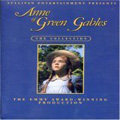Prince Edward Island: General Tourist Information
Time Zone:
Prince Edward Island is in the Atlantic Standard Time zone.
Climate:
Between June and mid October the climate provides
warm summers with average high temperatures around 74 F/23 C. Early fall is
pleasant, too, because the warm waters of the Northumberland Strait keep the
days in the mid 60s F/19 C. Summer nights can be in the upper 50s F/14 C,
October nights in the 40s F/6-8 C. The winter is long (the Northumberland Strait
fills with ice) and the spring is cool.
Capital City:
Charlottetown is the small capital City of Canada’s island province, and has a
population of about 35,000. Its downtown area is lined with trees and has a distinctly
charming atmosphere. The city’s harbour lies to the south of the central
business district. Charlottetown is the island’s business and entertainment
centre and is the focal point of Prince Edward Island’s bustling tourist
industry. The pace of life is not hectic and the quality of life is enriched by
social and cultural events that take place throughout the year. The city is a
safe place to bring up children. There are a number of social activities that
are available to the population.
Provincial Flag:
The design of the Prince Edward Island flag is modeled after the coat of arms in
rectangular shape and is bordered on the three sides away from the mast by
alternative bands of red and white.
Provincial Coat of Arms:
In the chief of the shield is the lion passant (or "leopard") of England. The
lower portion depicts three oak saplings, representing the Island's three
counties, beneath a mature oak that originally represented Great Britain. The
crest is a blue jay holding in its beak a sprig of red oak, both symbols of the
island. The crown represents royal sovereignty and its use in the arms is an
honour granted by the Queen. The supporters are silver foxes, rare animals
native to the region; fur farming was perfected on Prince Edward Island, and
Island silver fox fur was prized. The fox also represents sagacity and wit. To
denote other Island industries, one fox wears a garland of potato blossoms, and
another one wears a length of fishing net. The compartment centres on a Mi'kmaq
eight-pointed star symbol representing the sun; this is surrounded by roses for
England, lilies for France, thistles for Scotland, and shamrocks for Ireland, as
well as Lady's Slippers, the floral emblem of the Island. The island's motto,
Parva sub ingenti (the small under the protection of the great), is taken from
Virgil's Georgics. The full quotation is: ...etiam Parnasia laurus parva sub
ingenti matris se subicit umbra. ...so too a small plant, beneath its mother's
mighty shade, upshoots the laurel-tree of Parnassus.
Provincial Bird:
The Blue Jay was officially named the provincial bird during the 1977 session of
the PEI Legislative Assembly. It was chosen after a province-wide public vote
held during environment week in 1976. It is easily identified by its prominent
sky-blue hood, wings and tail feathers. Its throat and breast are white, and
horizontal black arcs accent the wing tips and long tail. Common to the Island
all year long, during the spring and summer, the Blue Jay secludes itself in
woodland areas where it nestles, feeds and raises its young. In the autumn, it
prepares for winter by gathering food - grains, seeds and suet. Winter is the
ideal time for sighting the Blue Jay, its shrill cries cutting the silence of
the crisp winter air.
Provincial Flower:
The Lady's Slipper was adopted as the provincial flower on April 25, 1947. The
orchid gets its name from the shape of its petals which form a pouch somewhat
like a slipper. The Lady's Slipper blooms in late May and June and grows in
shady and moist woodlands. These delicate flowers should not be picked, nor
transplanted, as they will rarely survive a change of habitat.
Provincial Tree:
When Jacques Cartier arrived in 1534, the Red Oak was reasonably common in the
Island forest, especially in the area east of what is now called Tracadie Bay.
Subsequent explorers and settlers valued its strong, heavy, fine-grained wood
for furniture, cabinets, veneer, and barrel making. Its bark is high in tannic
acid and was probably used in leather making. Land-clearing and harvest of Red
Oak have greatly reduced its distribution in the province. Today it is
restricted to relatively small scattered patches such as the Royalty Oaks
Natural Area in Charlottetown. Although many consider the Red Oak to be the tree
on the Provincial Coat-of-Arms (adopted in 1905), this has never been formally
recognized. The acorns visible on the largest tree appear to be those of white,
rather than red oak.
Provincial Tartan:
People of Scottish descent make up the largest ethnic group on Prince Edward
Island. To recognize their contribution in settling PEI, a design by Mrs. Jean
Reed was adopted as our provincial tartan in 1960. The reddish-brown signifies
the redness of the soil, the green represents the grass and the trees, the white
for the caps on the waves, and the yellow is for the sun.
The Island Hymn:
The patriotic song of Prince Edward Island, which was written by Lucy Maud
Montgomery in the spring of 1908. It was performed for the first time in public
on May 22 of that year. It was sung to Lawrence W. Watson's music, which had
been composed especially for her lyric. The manuscript music, dated
Charlottetown, 27 Oct 1908, and correspondence relating to it are displayed at
Green Gables House, Cavendish, PEI.
